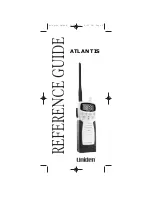
LEA-M8S / LEA-M8T - Hardware integration manual
UBX-15030060 - R06
Product handling
Page 22 of 33
Production information
4
Product handling
4.1
Packaging, shipping, storage and moisture preconditioning
For information pertaining to reels and tapes, moisture sensitivity levels (MSL), shipment and storage
information, as well as drying for preconditioning see the LEA-M8S Data sheet
[1] and NEO / LEA-
M8T Data sheet
Population of modules
☞
When populating the modules, make sure that the pick and place machine is aligned to the copper
pins of the module and not on the module edge.
4.2
Soldering
Soldering paste
Use of “No Clean” soldering paste is strongly recommended, as it does not require cleaning after the
soldering process has taken place. The paste given in the example below meets these criteria.
Soldering paste:
OM338 SAC405 / Nr.143714 (Cookson Electronics)
Alloy specification:
Sn 95.5/ Ag 4/ Cu 0.5 (95.5% tin/ 4% silver/ 0.5% copper)
Melting temperature:
217 °C
Stencil thickness:
The final choice of the soldering paste depends on the approved manufacturing procedures.
The paste-mask geometry for applying soldering paste must meet the recommendations.
☞
The quality of the solder joints on the connectors (’half vias’) must meet the appropriate IPC
specification.
Reflow soldering
A convection-type soldering oven is highly recommended over the infrared-type radiation oven.
Convection-heated ovens allow precise control of the temperature, and all parts will heat up evenly,
regardless of material properties, thickness of components and surface color.
As a reference, see the IPC-7530 Guidelines for temperature profiling for mass soldering (reflow and
wave) processes, published in 2001.
Preheat phase
During the initial heating of component leads and balls, residual humidity will be dried out. Note that
this preheat phase will not replace prior baking procedures.
Temperature rise rate: max 3 °C/s. If the temperature rise is too rapid in the preheat phase it may
cause excessive slumping.
Time: 60 – 120 s. If the preheat is insufficient, rather large solder balls tend to generate.
Conversely, if performed excessively, fine balls and large balls will generate in clusters.
End temperature: 150 – 200 °C. If the temperature is too low, non-melting tends to be caused in
areas containing large heat capacity.
Heating/ Reflow phase
The temperature rises above the liquidus temperature of 217 °C. Avoid a sudden rise in temperature
as the slump of the paste could become worse.
Limit time above 217 °C liquidus temperature: 40 – 60 s
Peak reflow temperature: 245 °C












































